Take a Caravan Safari!
Red squirrels in Northumberland, ospreys in Rutland, seals in Lincolnshire and puffins in Wales. We reveal the exciting wildlife you can see during a tour around the UK in your caravan.
Words by Matty Graham
You don’t have to fly to the Serengeti or Canada’s Arctic tundra to indulge in a wildlife safari. The truth is that the UK is absolutely brimming with wildlife and you can see all manner of animals while using your caravan as a base camp.
Forget pricey hotels, delayed flights and dodgy food selections; a staycation safari lets you see it all without having to dust off your passport. In fact, with so much wildlife on offer within these shores, you’re spoilt for choice.
Well, don’t worry, because this feature will arm you with all the insider information on where to see the best wildlife the UK has to offer, when to see it and also some expert tips on how to capture these critters on camera and make some unforgettable memories. We’ll even tip you the wink on the best places to pitch your caravan so you don’t have to spend hours researching.
Ready to get started?
Red squirrels in Northumberland
Location: Kielder Castle, Kielder
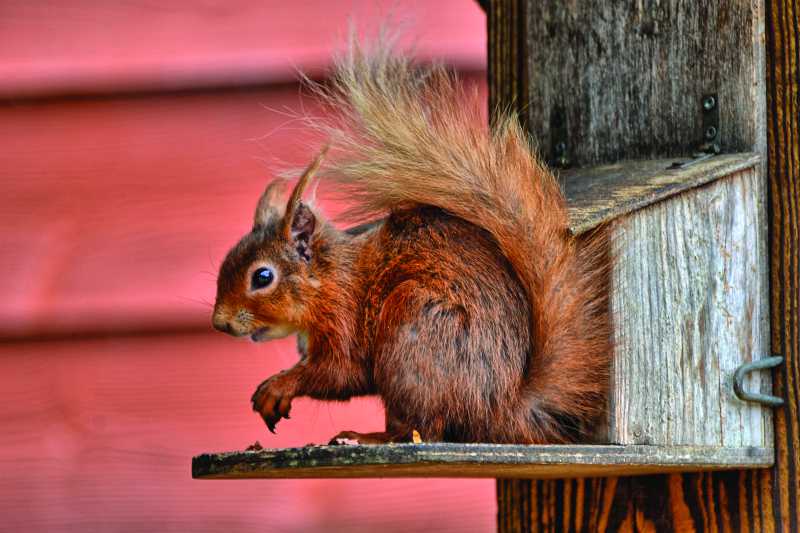
Years ago the UK was full of red squirrels, but following the introduction of greys from America in the 1800s, the reds’ numbers have been decimated. While there’s an estimated 2.5 million greys now living in the UK, there’s thought to be just 140,000 red squirrels left.
Fear not, though, the plucky red still thrives in certain pockets of the country and one of the best places to see them is in the majestic countryside of Northumberland. The most northerly county in England is a hotspot for the reds and one of the best places to visit is Kielder Castle’s visitor centre.
Just £7 will buy you a combined parking and toll road ticket and get you access to the viewing hide, from where you’ll hopefully be able to see the reds foraging for nuts.
Best time to see them
Late autumn is the best time to see the squirrels as fewer leaves on the trees makes them easier to spot.
Best place to stay
Kielder Village Campsite, Kielder, Northumberland NE48 1EJ
T 01434 239257
W kieldercampsite.co.uk
Dolphins in Cornwall
Location: Padstow, Cornwall
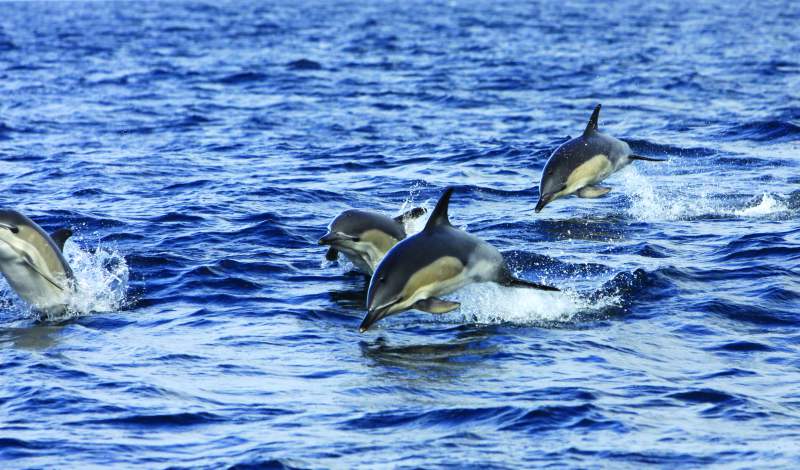
If you’re heading to the UK’s most south westerly county, you stand a great chance of seeing solo dolphins or pods of the engaging creatures, which frequent the waters off the coast, especially during the warmer summer months.
As well as common dolphins, you can see the rarer Risso's dolphin, plus visiting sharks, whales and even leatherback turtles, if you're lucky. There are two approaches to take to spot dolphins successfully.
If you’re a landlubber, head to high ground on nearby cliffs, as pods in the water will be easier to sight. However, the better approach is to book a place on a wildlife-watching boat (above), as the captains have years of experience in seeking out and spotting marine life.
Best time to see them
Summer months.
Best place to stay
Padstow Touring Park, Padstow, Cornwall PL28 8LE
T 01841 532061
W padstowtouringpark.co.uk
Puffins In Wales
Location: South Stack Cliffs RSPB, Anglesey
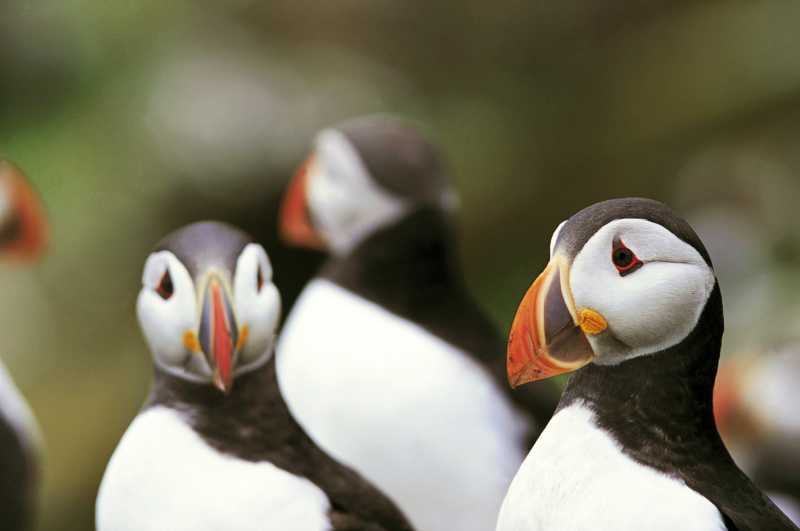
South Stack in Wales is one of the best places in the UK to see not only puffins, but guillemots and razorbills. Open all year round, the visitor centre can be accessed between 10am and 5pm and is free to visit and park at (although donations are welcomed).
There are estimated to be 580,000 pairs of puffins in the UK and the bird is instantly recognisable thanks to its brightly coloured bill. With a good lens or binoculars you’ll be able to see puffins nesting on the cliffs and flying off to collect food.
Best time to see them
The best time to see the puffins is during the breeding season, which is at its height between March and April.
Best place to stay
Pen-y-Llyn Touring Caravan Site, Llanfair-yn-Neubwll, Holyhead, Anglesey LL65 3LB
T 01407 740017
W penyllyn.co.uk
Ospreys In Rutland
Location: Near Manton, Rutland
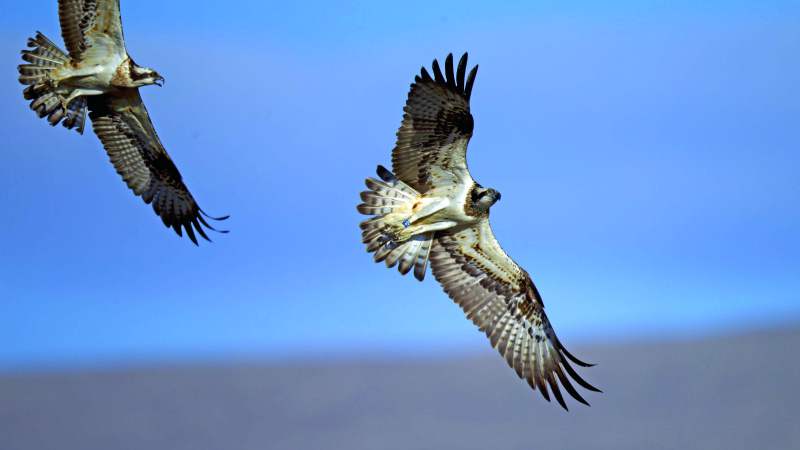
Who’d have thought one of the UK’s rarest birds would choose to settle in the smallest county?
Well, believe it, because Lyndon Nature Reserve is home to the Rutland ospreys. The reserve is part of the huge Rutland Water area and the project has played a major role in the conservation of these stunning birds, which can weigh around 1,400g (females up to 1,600g) and have a wingspan measuring 147-166 cm.
A total of 117 young ospreys have fledged from Rutland since 2001 so you stand a good chance of seeing one. Remember, though, that the birds’ nests are a fair distance from the viewing areas so you’ll need a good pair of binoculars or a long lens for photography. That said, you can get a very close-up view thanks to the live-feed webcam that is trained on the nests.
Best time to see them
Breeding occurs between April and July, so there will be increased activity as the parents return with food for the young.
Best place to stay
Lyndon Top Caravan Park, Lyndon Road, Oakham, Rutland LE15 8RN
T 01539 431222
W lyndontop.com
Wild Deer in the New Forest
Location: Bolderwood Deer Sanctuary, New Forest, Hampshire
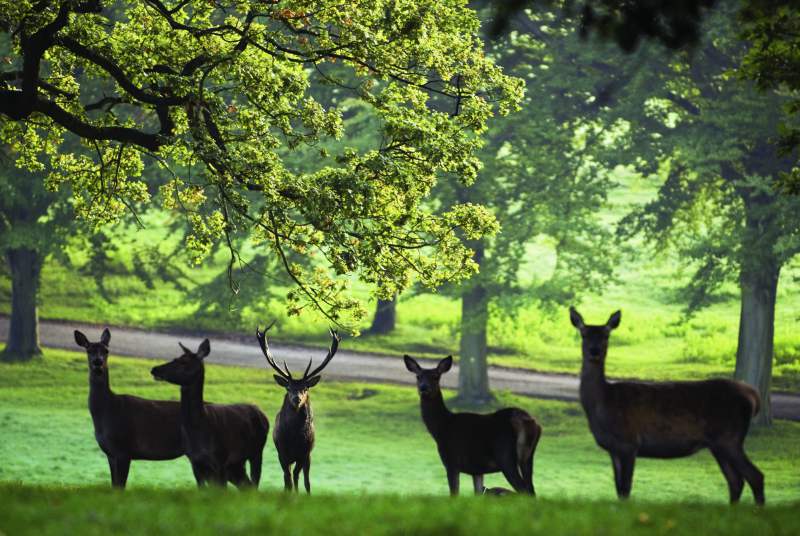
Did you know there are no less than five species of deer that roam the New Forest?
Along with the more common fallow, roe, sika and red deer, you can also spy rarer muntjac. The most common type is the fallow deer, and there about 1,300 in the New Forest, while the red deer (Britain’s largest land mammal) numbers about 90.
At the Bolderwood Deer Sanctuary (postcode SO43 7GQ), you can park for free and see the deer from a specially-built platform that overlooks a large meadow. Between April and September the deer are fed by a ranger (usually around midday).
If you want to witness the rutting season, this occurs during autumn, although you should always remember to keep your distance from the frisky deer!
Best time to see them
Deer are present throughout the year, but rutting season occurs in autumn.
Best place to stay
Red Shoot Camping Park, Linwood, Ringwood, Hampshire BH24 3QT
T 01425 473789
W redshoot-campingpark.com
Seals In Lincolnshire
Location: Donna Nook, Lincolnshire
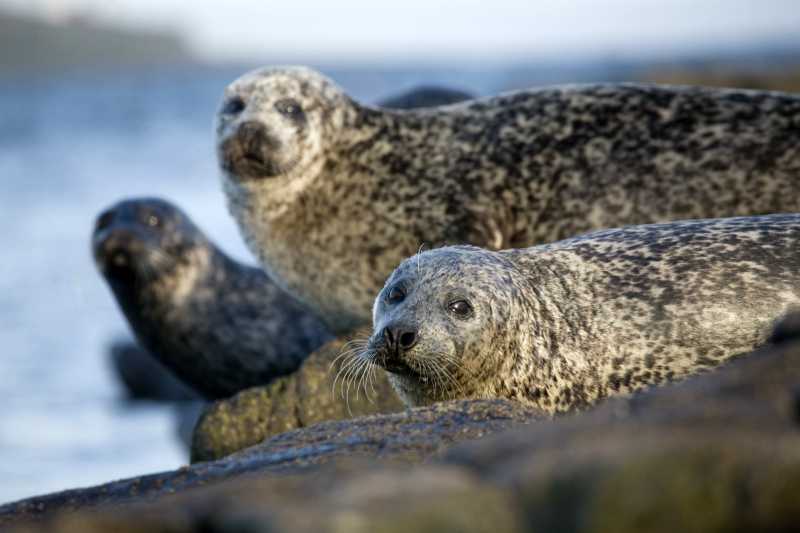
Grey seals have been breeding on the Lincolnshire coast since the 1970s, and they use the wide expanses of sand as their chosen nursery to give birth to their pups. The pups are born with white fur and look incredibly cute. The viewing area gets you fairly close to the seals so you should return to the caravan with a memory card full of great pictures.
At birth, the pups weigh around 14 kg, but they grow quickly thanks to the 60% fat in the mother’s milk. A full-grown adult male can eventually tip the scales at 300 kg.
In the winter, Donna Nook usually has (human) food to buy and toilets available, but be aware that you can not take your dog. The main car park charges £5 for an all-day ticket, with a percentage donated to support conservation efforts.
Best time to see them
Seal season stretches from October to December, as that’s when you’ll be able to see the most seals on the beaches.
Best place to stay
Snailsspace Campsite and Cabins, The Old Station Yard, Station Road, Ludborough, Lincolnshire DN36 5SQ
T 07725 952908
W facebook.com
Butterflies in Stratford-upon-Avon
Location: Stratford-upon-Avon, Warwickshire
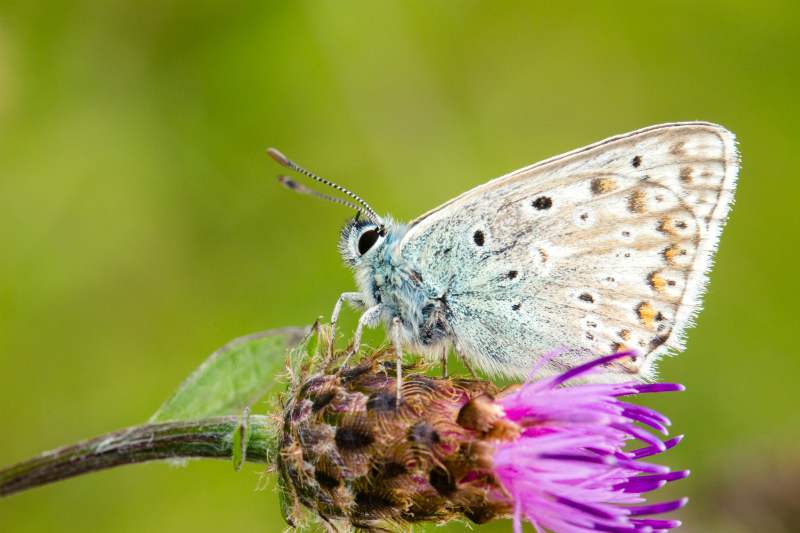
Fancy taking pictures of beautiful butterflies on a cold winter’s day? Head to Stratford Butterfly Farm and you can see the UK’s largest tropical butterfly collection. Open all year, the farm is not only full of butterflies, but is also home to snakes, reptiles, amphibians and creepy crawlies.
To get the best pictures of these small subjects, you'll need a macro lens. A family ticket to the farm costs £22.50.
Best time to see them
Open all year round, so the perfect escape on a wet day.
Best place to stay
Riverside Caravan Park, Warwick Rd, Stratford-upon-Avon CV37 0NS
T 01789 292312
W stratfordcaravans.co.uk
Beavers In Scotland
Location: Barnluasgan, Argyll
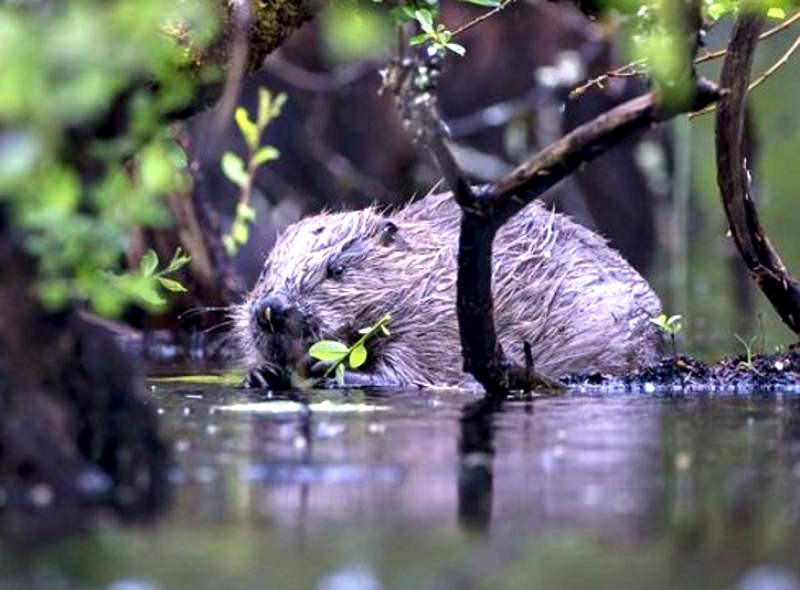
Barnluasgan in Scotland will be quite the tow for most caravanners in the UK, but the reward that awaits adventurers prepared to hitch up and drive is the chance to see Scotland’s elusive, but incredible, wild beavers.
The wetlands here are home to a number of trails, and as the area is remote, the nearest postcode for the sat-nav is PA31 8PS.
The beavers have thrived since their reintroduction in 2009 and are active from spring to late autumn. There is an information centre at Loch Barnluasgan, but your best bet is to visit early in the morning and head out exploring on the various trails.
Best time to see them
There’s a fairly wide window between spring and late autumn.
Best place to stay
Lochgilphead Caravan Park, Bank Park, Lochgilphead, Argyll PA31 8NX
T 01546 602003
W lochgilpheadcaravanpark.com
Otters in Wales
Location: Bosherton Lakes, Pembrokeshire
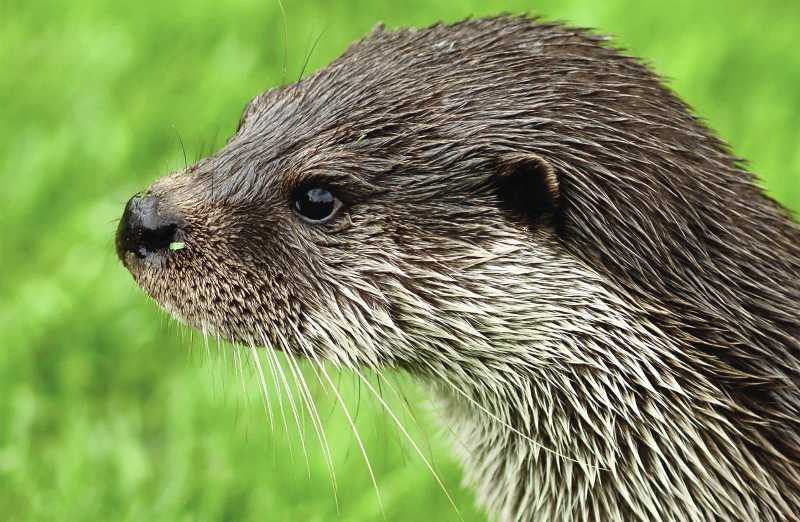
Otters can be found in the UK all through the year as they do not hibernate. One of the best places to see them is Bosherston Lakes in Pembrokeshire, where their numbers are thriving. As otters dive for food, one of the best ways to spot them is to look out for trails of air bubbles and then spy on them as they pop up with food.
Otters are active during the day, so you won’t have to set the alarm especially early to see them. You should be able to circumnavigate the lake route in 40 minutes and, surprisingly, the walk is listed as dog-friendly.
Good news, you can see the otters all year round.
Best place to stay
Buckspool Campsite, Buckspool Farm, Bosherston, Pembrokeshire SA71 5DP
T 01646 685825
W rj-roberts.wixsite.com/bosherston
Leaping Salmon In Scotland
Location: Philiphaugh Salmon Viewing Centre, Selkirkshire
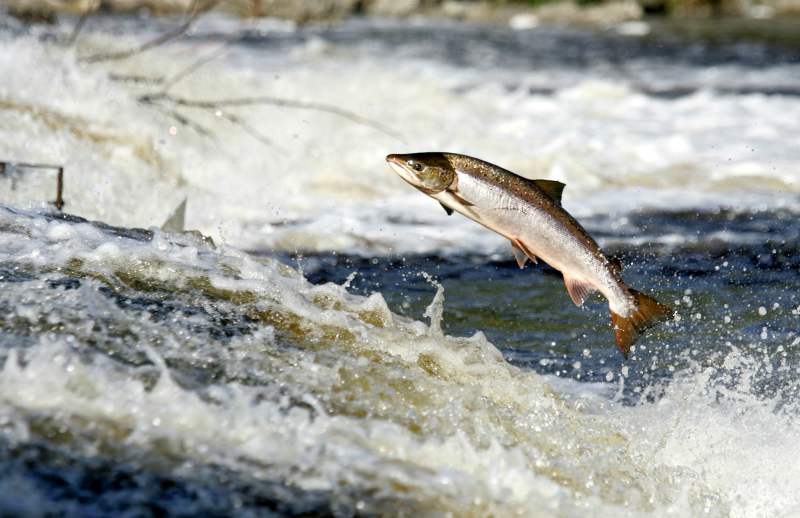
One of the most spectacular sights a wildlife lover can see is a mighty salmon leaping from the river as it strives to swim upstream to its breeding ground. One of the best places to witness this natural athleticism is at the Salmon Viewing Centre on the Philiphaugh Estate in Selkirkshire.
The centre includes displays to learn about the life cycle of the salmon, plus there are interactive screens that give different views from the river — there’s even a salmon counter to show how many have made it through each month. There are also walks along the river and birdlife to capture on camera.
Best time to see them
May and June or September to November when the river is high.
Best place to stay
Victoria Park Caravan Site, Buccleuch Rd, Selkirk,TD7 5DN
T 01750 20897
W www.scottishcampingguide.com
Pack the right kit
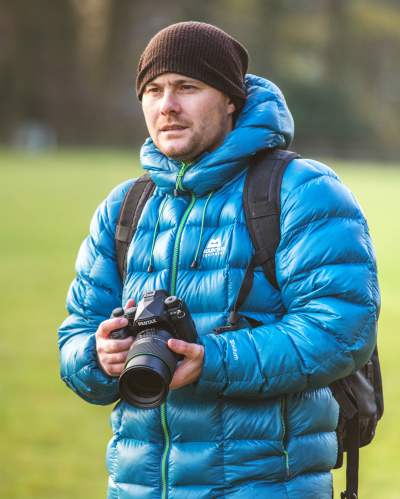 Photographers have two main choices when it comes to capturing wildlife. The first is to use a DSLR or mirrorless camera with an interchangeable lens that offers a long focal length.
Photographers have two main choices when it comes to capturing wildlife. The first is to use a DSLR or mirrorless camera with an interchangeable lens that offers a long focal length.
For most of the subjects in this list, you’ll need a lens that offers at least 300 mm to capture usable images. Remember, you’ll want to keep your distance for your own safety, but also to avoid stressing the wildlife.
These lenses focus quickly and offer excellent image quality but can be expensive. The second approach is to invest in a super zoom camera, such as the Nikon P1000 (£999). With a fixed lens and a focal length range of 24-3,000 mm, you can capture subjects way off in the distance.
Four tips for wildlife photography
- Keep your camera steady. If you’re photographing wildlife, the chances are that you are using a long focal length. Photos are far more vulnerable to camera shake, caused by movement and vibrations, at longer focal lengths because movements are exaggerated when you are zoomed in. Modern cameras feature In-Body Image Stabilisation technology to counter these vibrations, but it’s also worth supporting the camera, too, either with a tripod/monopod if you're on the move, or with a coat or cushion if you are viewing the wildlife from a hide.
- Seek out the best light. The golden hues of early morning light can transform an average image into a great photo, so the time of day really does make a huge difference to your pictures. One of the effects of this low directional light is that it can cause lens flare, which appears as specular halos in the frame. If you encounter this, just add a lens hood to shield the front optic from the directional light.
- Find natural backgrounds. The clue is in the name because the best wildlife images look (or at least appear to look) like they were taken in the wild. This means you should avoid any man-made features from the frame, such as wood cabins, brick walls and distracting signs. This may mean you have to move around to find the best composition, and if you can’t help but include the odd rogue sign in the background, you can always try to remove it later using image-editing software, such as Photoshop.
- Shoot in RAW file format. Most cameras shoot in two file formats: RAW and JPEG. JPEG takes up less space on your memory card, but only captures a limited amount of colour and light data. As the name suggests, the RAW file format captures the raw data from the scene, and these files can be edited using RAW conversion software, such as Lightroom or Adobe Camera RAW, to a higher tolerance. This enables you to recover detail from areas of shadows and highlights that wouldn’t be possible from JPEG files.








Recent Updates
Caravan showers: all you need to know
In this guide, we’ll discuss the different types of showers, how they work, and how to fit an external shower point to your caravan ...
Caravan towing: all you need to know
Towing a caravan may seem daunting initially, but a few simple tips can make the journey enjoyable and ...
All you need to know about towbars & towballs
Flange, detachable, swan neck, retractable – towbar technology choice is bewildering. Don’t worry. We’ll ...
Caravan WiFi: everything you need to know
Caravan holidays are the ultimate way of getting away from it all, although we sometimes need a link to the ...
Caravan insurance: all you need to know
Navigating the world of caravan insurance can feel like a daunting task. Fear not, as this comprehensive ...
Buying a caravan: what you need to know
Let us guide you through some of the complicated things to think about when first looking at buying a ...
Caravan awnings: a buyers' guide
Caravan awnings are a fantastic addition to any caravan as they are one of the simplest, quickest and most ...
Caravan electrics: avoid tripping out
All caravan owners have overloaded their mains supply at some time. Here’s how to master caravan electrics ...
Caravan heating systems: a quick guide to caravanning warmth
When winter is here, you’ll be glad of a decent caravan heating system if you’re out touring. Here’s how the ...
Caravan damp: a complete guide
There's little more guaranteed to strike fear into the heart of a caravan owner than the word 'damp'. But if ...
Other Articles
Caravan jockey wheels: the definitive guide
A well-functioning caravan jockey wheel can make all the difference to manoeuvring away from the towcar, especially if you don't have a caravan mover ...
Caravan cooking recipes
Caravan cookery inspirational ideas. No need to stress out in the kitchen with these quick and easy ...
Caravan bike racks: a complete guide
Exploring the beautiful surroundings while on a caravan trip is undeniably one of the greatest joys of the ...
A guide to solar power in your caravan
Not that many years ago, mains electrical hook-up on campsites was considered a bit of a luxury, and, for ...
The ultimate guide to caravan layouts
Choosing the right layout or floorplan of your caravan is an all-important part of the buying process – find ...
A guide to seasonal caravan pitches
Our in-depth guide to finding and securing seasonal caravan pitches on your favourite campsite ...
Caravan weights and payloads: a quick guide
The terminology of caravan weight – MIRO, MTPLM, noseweight, kerbweight, payload, weight plate upgrade – is ...
The ultimate guide to caravan motor movers
Caravan motor movers: everything you need to know about remote control caravan manoeuvring ...
Caravan cleaning: All you need to know
Whether you’re taking the caravan out for the first time or it’s just in need of a spruce up, our guide will ...
18 essential items for camping with your dog
Camping is for the whole family – including our four-legged members. Here's what you'll need to keep your dog ...